Aviation is a domain where innovation knows no bounds. It embarks on a transformative journey with the help of technology. As we dive deep into the historical roots of flight, from the pioneering moments of the Wright brothers to the present, we witness the evolution of aviation technology that has shaped how we fly in the skies and how pilots operate. This introduction sets the stage for exploring the future of aviation technology, where advancements in propulsion technologies promise a paradigm shift in the essence of air travel, benefiting airlines and sustainable development.
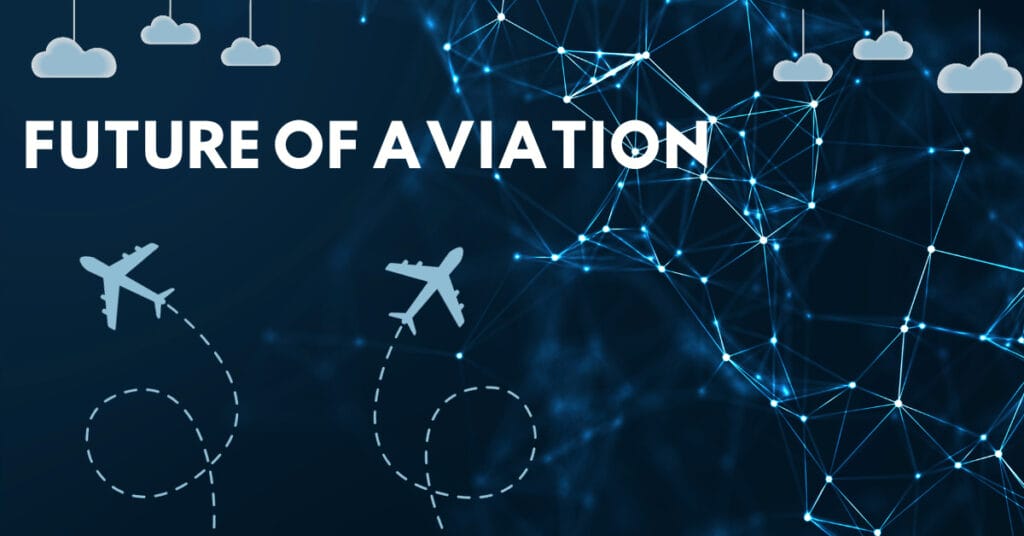
The Transformative Journey of Aviation Technology
This article will show aviation’s technological marvels, showcasing how advancements in navigation, materials, and automation have elevated the industry to new heights. From AI-driven aviation solutions to eco-friendly propulsion systems, we navigate the present landscape, offering a comprehensive understanding of the state-of-the-art innovations propelling modern air travel.
A Glimpse into the Future of Aviation
A glimpse into aviation’s future depicts an exciting trajectory where urban air mobility, sustainable aviation, and ground-breaking designs redefine the fabric of our journeys in the sky. Let us look into the future, where the fusion of imagination and technology promises to shape a new era in aviation, offering passengers an unparalleled experience above the clouds.
From Wright to Warp: Evolution of Flight
In the archives of aviation history, the Wright brothers’ historic flight stands as a monumental testament to human ingenuity. In 1903, Orville and Wilbur Wright achieved what was once thought impossible—the first powered, controlled, and sustained flight in Kitty Hawk, North Carolina. Their pioneering aircraft, the Wright Flyer, soared into the skies for 12 seconds, forever altering the course of human transportation. This historic moment marked the genesis of modern aviation, setting the stage for an unprecedented evolution in flight technology.
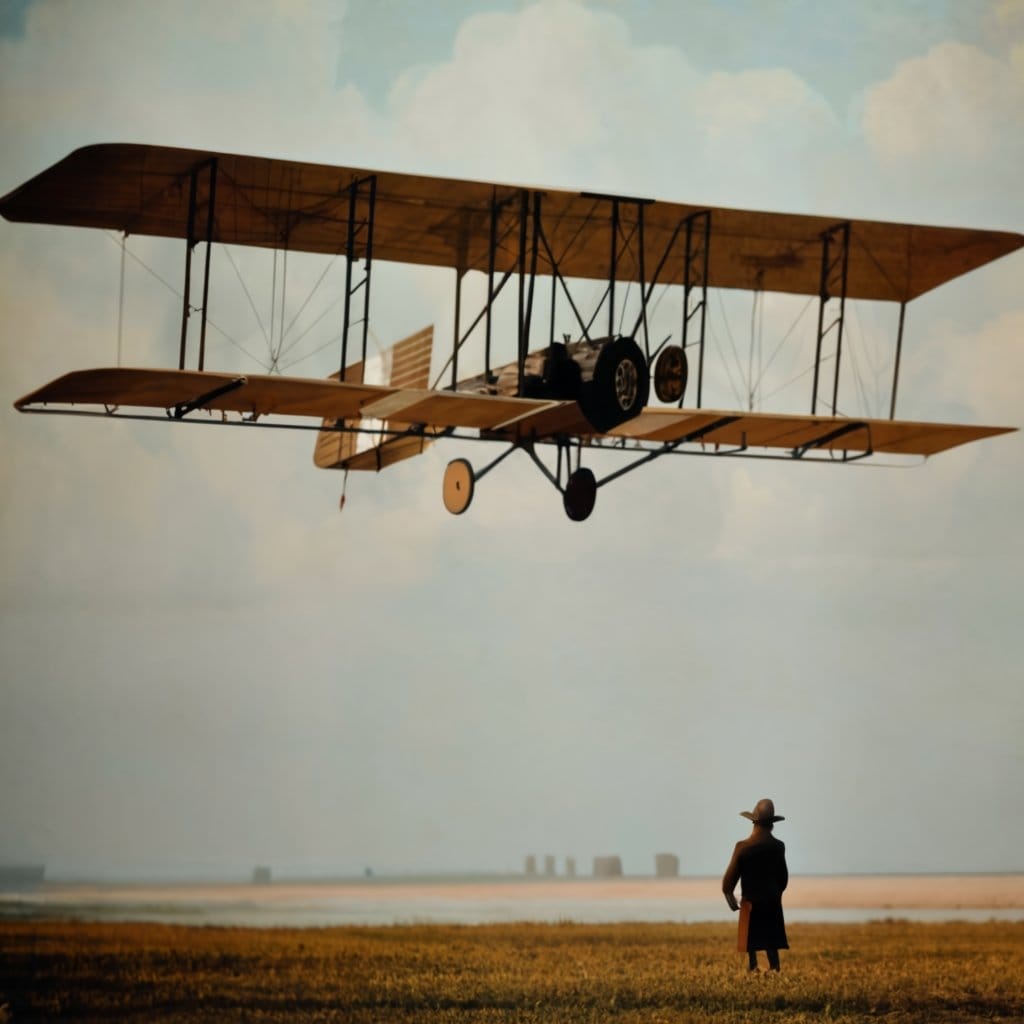
The Wright Brothers’ Historic Flight
As aviation progressed from its humble beginnings, milestones in propulsion became the engine driving its transformative journey. The Wright brothers paved the way for aerodynamics and aircraft design advancements with their meticulous approach. Subsequent breakthroughs in aviation propulsion, from the introduction of jet engines to the era of supersonic flight, unfolded as chapters in the ongoing saga of technological innovation. These milestones boosted the aviation industry forward, enabling faster, more efficient, and revolutionary modes of air travel.
Milestones in Aviation Propulsion
The evolution of flight, from the Wright brothers’ wooden biplane to the era of warp-speed travel, is a testament to the relentless pursuit of progress in aviation technology. The historic flight at Kitty Hawk marked not just the beginning but the catalyst for an unending journey into the skies, where each pioneering moment and propulsion milestone propelled humanity toward the next frontier of flight.
Current Technological Marvels

Technological advancements beyond conventional aircraft have revolutionized the aviation industry. The seamless integration of cutting-edge navigation, communication, and materials technologies has propelled the sector to unprecedented heights, transforming the skies and revolutionizing air travel experiences.
Advancements in Navigation and Communication
Advancements in navigation and communication have become the cornerstone of a seamless and efficient air travel experience. Leading-edge navigation systems, guided by satellite precision, have redefined flight paths, ensuring safety and precision in every journey. Additionally, communication technologies have evolved to connect aircraft, ground control, and passengers seamlessly, fostering a connected ecosystem that enhances modern air travel’s overall efficiency and safety.
Materials Shaping Modern Aircraft
The materials of modern aircraft have undergone a revolutionary transformation from the confines of conventional designs. Lightweight and robust composite materials have taken center stage, replacing traditional metals in aircraft construction. These materials contribute to fuel efficiency and enhance the structural integrity of aircraft. From carbon fiber-reinforced composites to advanced alloys, the evolution of materials has ushered in an era where aircraft are not just vehicles but feats of engineering inventiveness designed for optimal performance and durability.
AI Takes Flight with Automation
Integrating AI in aviation has brought a transformative evolution. As AI takes flight, its role extends far beyond mere automation. Airlines and aviation authorities are harnessing the power of AI to analyze vast amounts of data, from flight recordings to safety reports, identifying potential safety issues and optimizing flight operations. This technological leap is propelling the future of the aviation industry into an era of enhanced safety, efficiency, and the potential for more autonomous flight operations.
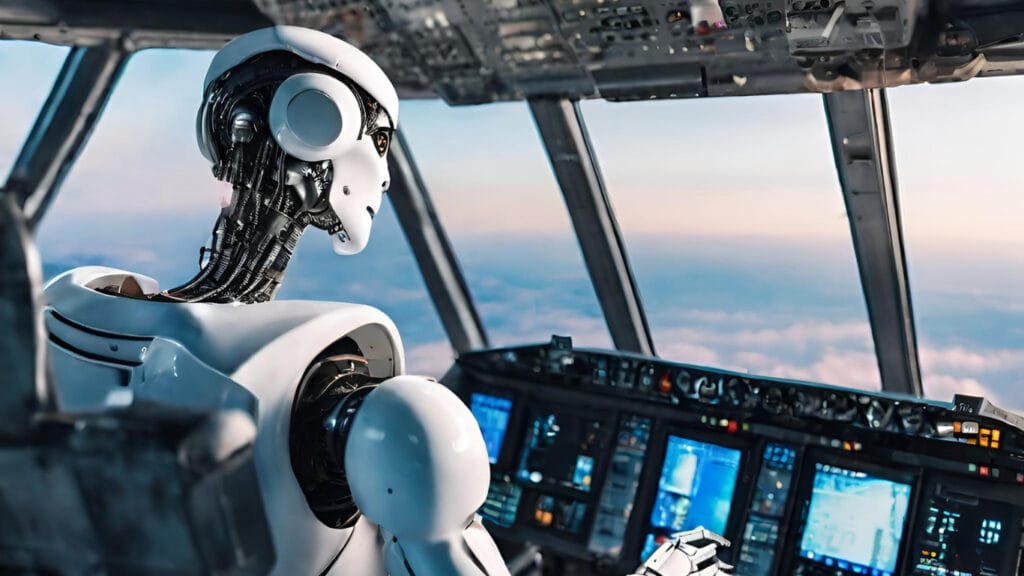
Harnessing Artificial Intelligence in Aviation
The harnessing of artificial intelligence in aviation is not confined to the cockpit alone. AI is streamlining routes and improving the overall customer experience. Its impact on safety and efficiency is palpable, as advanced AI systems bridge intelligent automation with human judgment. This collaboration holds immense potential to advance the reliability of flight operations, ensuring a harmonious partnership between technological precision and human expertise.
Automation’s Impact on Safety and Efficiency
Automation’s profound impact on safety and efficiency is a testament to the symbiotic relationship between technology and aviation. AI’s ability to process, analyze, and adapt in real-time is reshaping how we navigate the skies, offering a captivating glimpse into a future where innovation ensures safer skies and a more seamless and efficient journey for passengers worldwide.
Urban Air Mobility: The Future is Now
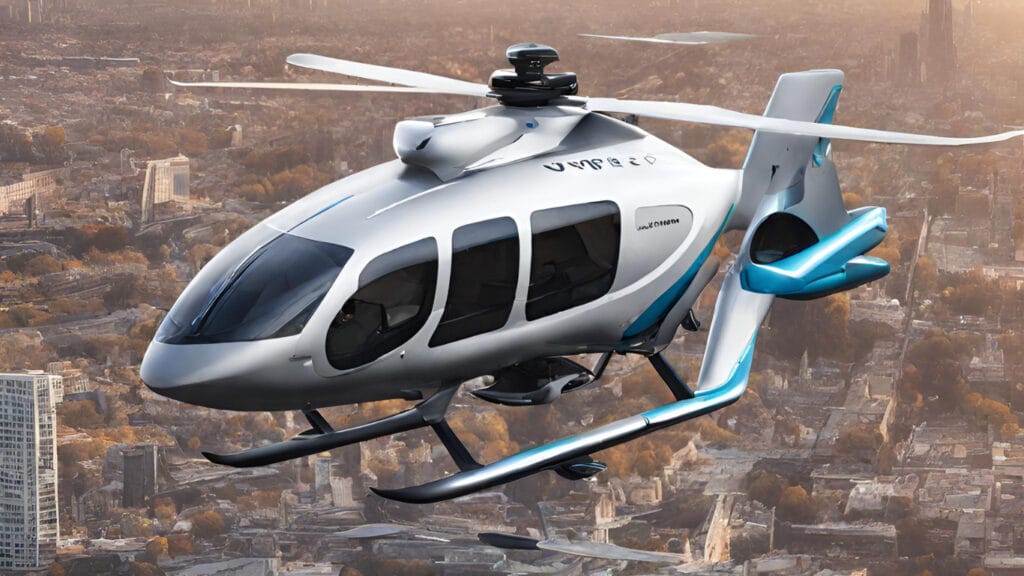
The era of Urban Air Mobility (UAM) has dawned, promising a revolutionary shift in the way we navigate our cities. As congestion on the ground reaches unprecedented levels, the skies are becoming a new frontier for transportation. UAM represents a paradigm shift, unlocking the potential for quicker, more efficient travel within urban landscapes. This transformative concept envisions a seamless integration of aerial mobility into our daily lives, and the future is closer than we think.
Concept of Urban Air Mobility
The concept of Urban Air Mobility is a fusion of innovation and necessity. As cities expand and traffic congestion rises, the need for alternative transportation solutions becomes paramount. UAM addresses these challenges by leveraging cutting-edge technologies, including eVTOL aircraft, to provide on-demand aerial transportation. This exploration of UAM signifies a departure from conventional modes of travel, paving the way for a future where the skies above our cities are as accessible and interconnected as the streets below.
Sky Taxis and Beyond
Sky Taxis, the heart of Urban Air Mobility, are futuristic vehicles designed for vertical takeoff and landing (VTOL). This electric vertical takeoff and landing (eVTOL) aircraft are more than just a mode of transportation; they are the future of urban living. By exploring the concept of UAM, we open doors to possibilities beyond traditional commuting. These aerial vehicles have the potential to redefine the way we connect, commute, and experience our cities, offering a dynamic and efficient solution to modern urban challenges.
Sustainable Skies
In pursuing greener aviation, the industry is making strides towards Sustainable Skies. One of this movement’s key drivers is exploring eco-friendly propulsion methods. The aviation sector increasingly focuses on minimizing its environmental footprint, recognizing the urgent need for sustainable practices. Sustainable Skies symbolize a commitment to responsible aviation, fostering innovation in propulsion technologies that aim to reduce the industry’s impact on the planet.
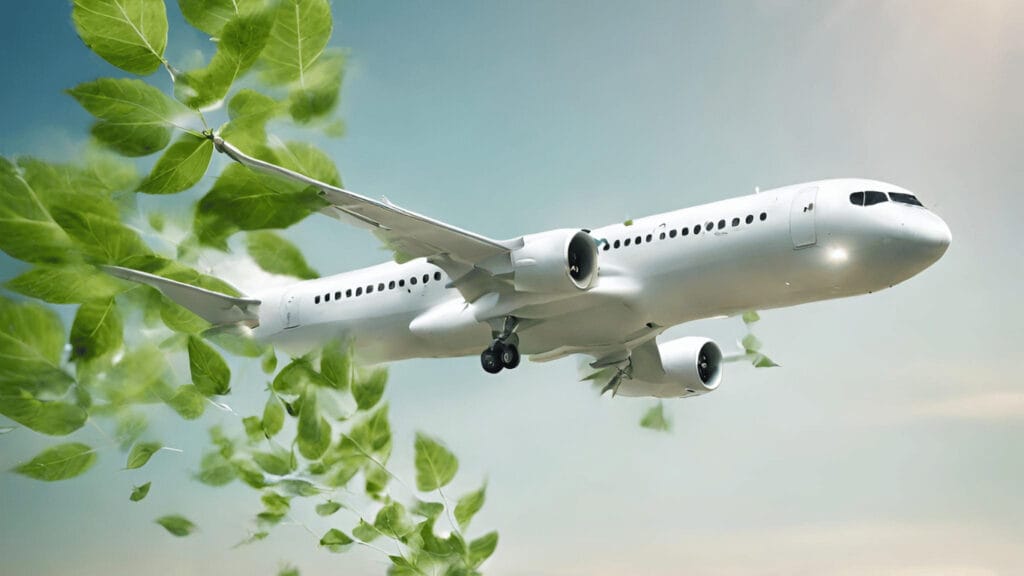
Eco-Friendly Propulsion
Electric propulsion stands out as a beacon of hope for achieving eco-friendly aviation. With advancements in electric aircraft propulsion, the industry is witnessing a transformative shift. Electric propulsion promises enhanced energy efficiency and significantly reduces carbon emissions. This technology represents a paradigm shift, offering a cleaner and quieter alternative to traditional aircraft engines. As the aviation landscape embraces the potential of electric propulsion, it paves the way for a more sustainable future above the clouds.
Biofuels and Sustainable Aviation Practices
Amid the push for eco-friendly aviation, biofuels emerge as a promising component of Sustainable Skies. The utilization of biofuels in aircraft holds the potential to decrease carbon emissions substantially. Biofuels offer a renewable and environmentally friendly alternative to conventional aviation fuels by tapping into sustainable sources such as algae or waste. Integrating biofuels into sustainable aviation practices is crucial to achieving a harmonious balance between air travel and environmental preservation.
Digital Transformation

In the realm of aviation, Digital Transformation is reshaping the landscape. This evolution encompasses various facets, but a pivotal focus lies in digitizing aviation operations. Integrating advanced technologies from flight planning to ground services optimizes processes, enhances safety, and provides a seamless experience. The Digital Transformation is not merely a modernization effort; it’s a strategic shift towards a more connected, intelligent, and responsive aviation ecosystem.
Cloud Technologies in Aviation
Cloud Technologies is at the heart of the Digital Transformation in aviation, a catalyst for the industry’s metamorphosis. Cloud solutions offer scalability, flexibility, and real-time collaboration, revolutionizing how information is stored and accessed. The aviation sector is leveraging cloud platforms to centralize data, enabling stakeholders to access critical information anytime, anywhere. This shift not only streamlines operations but also fosters collaboration, ensuring that all elements of the aviation network work in harmony.
Digitization of Aviation Operations
The Digitization of aviation operations goes beyond the surface, delving into the intricacies of data-driven decision-making and predictive maintenance. By harnessing big data analytics, airlines can optimize routes, reduce fuel consumption, and enhance operational efficiency. Predictive maintenance, a hallmark of this digital evolution, allows for proactive identification and resolution of potential issues, minimizing downtime and ensuring aircraft are in optimal condition. This holistic approach to Digitization propels aviation into a future where precision, safety, and sustainability converge seamlessly.
Innovations in Aircraft Design
The aviation landscape transforms with radical design innovations propelling aircraft engineering beyond conventional boundaries. At the forefront of this evolution are morphing wings and adaptive designs, marking a paradigm shift in how we perceive and engineer flying machines. Inspired by nature’s adaptability, morphing wings allow aircraft to alter their wing shape during flight, optimizing aerodynamics for different conditions. This ground-breaking technology is poised to redefine the efficiency and agility of future aircraft.
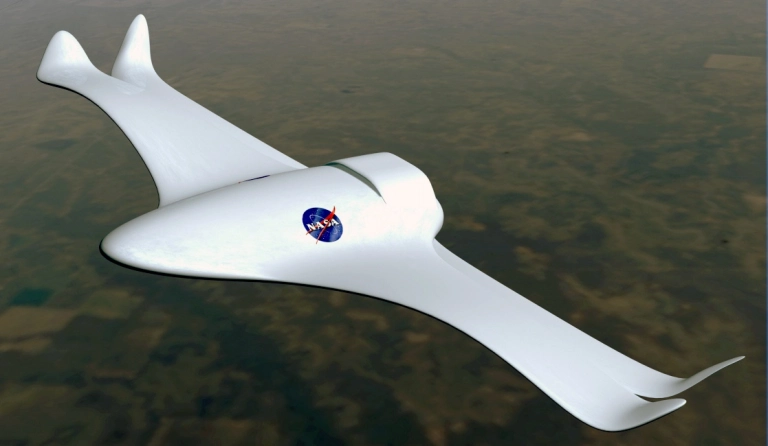
Radical Design Innovations
The era of conventional aircraft design is giving way to a new frontier characterized by radical innovations. Morphing wings, a standout among these advancements, enhance fuel efficiency and revolutionize aerodynamics. The ability of an aircraft to dynamically adjust its wing configuration in response to varying flight conditions ensures optimal performance, reducing drag and improving overall fuel consumption. This departure from traditional fixed-wing designs signifies a bold leap into a future where adaptability is a cornerstone of aviation excellence.
Impact on Fuel Efficiency and Aerodynamics
Morphing wing innovations address the inherent challenges of fixed-wing configurations by providing a dynamic solution to optimize lift and reduce drag. The result is a more streamlined and fuel-efficient aircraft that adapts seamlessly to the complexities of the skies. As the aviation industry embraces these transformative technologies, the journey towards sustainable, eco-friendly, and high-performance flight takes a decisive leap forward.
Passenger-Centric Technological Solutions

Passenger-centric technological solutions play a pivotal role in this transformation. Biometric boarding has emerged as a game-changer. This enhances security measures and streamlines the passenger journey, reducing queues and minimizing travel stress. In the pursuit of passenger satisfaction, passenger cabins have been advanced. Now, you won’t lose connectivity at 30,000 feet altitude.
The role of IoT in airport operations
In the era of smart airports, passenger-centric technological solutions are redefining the standards of convenience and efficiency. With its seamless check-ins, biometric boarding exemplifies the commitment to a frictionless travel experience. Incorporating the Internet of Things (IoT) in airport operations further amplifies this commitment. From intelligent baggage tracking to real-time updates on flight statuses, IoT ensures that passengers are empowered with information, fostering a sense of control and ease throughout their journey.
The Rise of Unmanned Aerial Vehicles (UAVs)
UAVs, commonly known as drones, have witnessed an unprecedented surge in popularity, catalyzing a revolution across various industries. Originally associated with military applications, drones have transcended their initial purpose and are now instrumental in transforming industries such as agriculture, logistics, and cinematography. This proliferation stems from their versatility, cost-effectiveness, and myriad applications in diverse sectors.

Drones: Revolutionizing Industries
Drones have become pivotal in reshaping traditional practices in the realm of aviation. Their applications span a wide spectrum, from surveillance and data collection to search and rescue missions. In agriculture, drones optimize crop management through aerial monitoring, enhancing precision and efficiency. The logistics industry leverages drone technology for swift and economical deliveries. Moreover, drones offer unparalleled perspectives in cinematography, revolutionizing how visual content is captured. This multifaceted impact underscores the transformative potential UAVs bring to industries that embrace the capabilities of Drones.
Applications of Drones in Aviation
The aviation sector has embraced drones for various applications, showcasing their adaptability and innovation. Because of the flexible flying operations of drones, they are crucial in monitoring infrastructure, inspecting challenging terrains, and supporting disaster management. Their ability to easily reach remote or hazardous locations makes them indispensable for tasks that were once impractical or perilous for manned aircraft. As technology advances, the applications of drones in aviation are poised to expand, ushering in a new era of efficiency and safety.
Hyperloop and Supersonic Travel

Transportation is on the brink of transformation with the emergence of Hyperloop technology. Hyperloop, a high-speed ground transportation system, envisions a network of vacuum tubes where pods travel at unprecedented speeds, challenging conventional notions of commuting. This technology promises to transform how we traverse cities, reducing travel times significantly. The potential benefits encompass enhanced efficiency, minimal environmental impact, and a redefined connectivity landscape.
Speeding Towards the Future
Hyperloop’s potential aligns with a broader vision of efficient and sustainable travel. Hyperloop technology aims to propel passengers and cargo at near-supersonic speeds by harnessing magnetic levitation and low-pressure environments. This novel approach reduces travel time and addresses environmental concerns by minimizing energy consumption. Simultaneously, supersonic air travel is experiencing a renaissance, with companies exploring cutting-edge aircraft designs that promise to shrink the world further, bringing distant destinations within striking distance and redefining our concept of time and space.
The resurgence of supersonic air travel
Hyperloop technology and supersonic air travel are emblematic of a future where speed and efficiency converge. The race to revolutionize transportation is about velocity and reshaping our understanding of connectivity and accessibility. As these technologies progress, they beckon us into an era where distance constraints fade away, opening up new frontiers and possibilities for a global community in perpetual motion.
Space Tourism: Beyond Earth’s Atmosphere
Embark on a celestial journey as commercial space tourism propels humanity beyond the boundaries of Earth’s atmosphere. The advent of suborbital adventures marks a paradigm shift, where private enterprises are unlocking the cosmos for intrepid explorers. Beyond the confines of traditional travel, these ventures offer a unique opportunity for civilians to experience weightlessness and witness the curvature of our planet from the vantage point of space.

Emergence of commercial space tourism
The emergence of commercial space tourism signals a new era in the democratization of space exploration. Visionary companies are competing to make celestial journeys accessible to the public, turning what was once the realm of astronauts into a thrilling adventure for enthusiasts. As spacefaring technology advances, the dream of soaring into the cosmos inches closer to reality, fostering a sense of awe and wonder that transcends the limits of our terrestrial existence.
Regulatory Frameworks for the Future
In the ever-evolving landscape of emerging technologies, formulating robust regulatory frameworks stands as a cornerstone for sustainable progress. Governments and regulatory bodies are tasked with crafting policies that can adeptly navigate the complexities of cutting-edge advancements. As innovations such as artificial intelligence and transformative technologies reshape industries, there is an increasing need for regulatory agility to ensure a balance between fostering innovation and safeguarding the public interest. The future demands regulatory frameworks that are not only anticipatory but also flexible enough to adapt swiftly to the dynamic pace of technological evolution.
Adapting Policies to Emerging Technologies
The acceleration of transformative technologies necessitates a paradigm shift in policy-making. Adapting policies to govern emerging technologies effectively requires an in-depth understanding of their potential impacts on society, economy, and ethics. Policymakers must proactively dialogue with industry experts, scientists, and stakeholders to craft regulations that foster innovation while mitigating risks. The paramount is to strike the right balance between encouraging technological advancements and addressing potential ethical concerns. Policies tailored to the unique characteristics of each emerging technology will play a pivotal role in shaping a future where innovation coexists harmoniously with societal well-being.
Need for Flexible Regulatory Approaches
As technological landscapes evolve, the call for flexible regulatory approaches becomes imperative. A one-size-fits-all model is no longer suitable for the intricate challenges posed by emerging technologies. Flexibility in regulatory frameworks allows for a dynamic response to the nuances of each technological domain, enabling authorities to stay ahead of potential risks and ensuring that regulations remain relevant in an ever-changing environment. This adaptability fosters innovation and establishes a foundation for regulatory resilience, essential for navigating the uncertainties that come hand-in-hand with the rapid pace of technological progress.
Collaborative Efforts for Global Aviation Standards
In the aviation industry, establishing global standards requires collaborative endeavors from regulatory bodies worldwide. As air travel becomes increasingly interconnected, a unified regulation approach ensures consistency, safety, and efficiency. Collaborative efforts involve harmonizing standards, sharing best practices, and fostering international cooperation. By working together, regulatory bodies can create a cohesive framework that addresses the challenges posed by emerging technologies, laying the groundwork for a globally integrated and technologically advanced aviation sector.
Future Job Landscape in Aviation
The job landscape in aviation is undergoing a transformative shift as the industry readies itself for the challenges of tomorrow. Emerging roles in aviation technology are reshaping the workforce, introducing positions that bridge the gap between traditional aviation and cutting-edge technologies. From drone operators and data analysts to specialists in artificial intelligence, the aviation sector is witnessing the emergence of roles that demand a unique blend of technical expertise and a forward-thinking mindset.
Preparing for Tomorrow’s Aviation Workforce
In anticipation of the evolving job landscape, the aviation industry is proactively preparing its workforce for the demands of tomorrow. Recognizing the significance of staying ahead in technology, comprehensive training and education programs are being developed. These initiatives focus on upskilling and reskilling the workforce, ensuring that aviation professionals are equipped with the latest knowledge and tools to navigate the complexities of emerging technologies. The commitment to continuous learning is becoming a cornerstone for aviation professionals aiming to thrive in the future job market.
Emerging Roles in Aviation Technology
As technology advances, aviation is witnessing the rise of roles that were once considered futuristic. Drone pilots are becoming integral for recreational use and applications ranging from surveillance to cargo delivery. Data analysts are in high demand to interpret the vast amounts of data modern aircraft generate. Artificial intelligence specialists are crucial in developing smart systems that enhance safety and efficiency. These emerging roles define the new landscape of aviation jobs, creating opportunities for those passionate about technology and innovation.
Training and Education for the Future Workforce
The key to navigating the future job landscape in aviation lies in robust training and education programs. Industry leaders are investing in initiatives focusing on the intersection of traditional aviation expertise and the latest technological advancements. These programs aim to equip the workforce with the skills to operate and manage the next generation of aircraft and systems. The emphasis is not just on technical proficiency but also on fostering a mindset of adaptability and innovation, preparing aviation professionals to excel in the dynamic and evolving aviation landscape.
The Ethical Dimension: Balancing Progress and Responsibility
In the dynamic realm of aviation innovation, a crucial aspect that demands meticulous attention is the ethical dimension of technological advancement. As we propel ourselves into an era dominated by artificial intelligence (AI) and automation, a delicate equilibrium must be maintained between progress and responsibility. It’s imperative to acknowledge the potential ethical considerations that may arise, requiring a thoughtful approach to ensure that the benefits of technological evolution in aviation are harmonized with ethical principles.
Ethical Considerations in Aviation Innovation
The rapid integration of AI and automation in aviation prompts a critical examination of the ethical considerations inherent in this transformative journey. Among the foremost concerns is the need to address privacy issues stemming from the extensive data collection and utilization of advanced technologies. Striking a balance between leveraging innovative capabilities and safeguarding individual privacy is a nuanced challenge that necessitates ethical frameworks capable of navigating the intricacies of this evolving landscape.
Addressing Privacy Concerns in Aviation Technology
Privacy concerns loom as aviation technology evolves, prompting a conscientious reflection on how personal data is managed and protected. As AI systems process vast amounts of information, establishing robust safeguards becomes paramount. Aviation stakeholders must be proactive in implementing stringent measures to secure sensitive data, ensuring that the integration of cutting-edge technologies does not compromise individuals’ privacy rights. By prioritizing ethical considerations, the aviation industry can inspire confidence and trust in the responsible adoption of AI and automation.
Ethical Frameworks for the Use of AI and Automation
The industry must embrace comprehensive ethical frameworks to navigate the ethical challenges accompanying the rise of AI and automation in aviation. These frameworks should encompass transparency, fairness, and accountability principles, guiding technology’s responsible development and deployment. Establishing clear ethical guidelines fosters an environment where innovation aligns seamlessly with societal values, laying the foundation for a future in which progress is groundbreaking and ethically sound.
Challenges on the Horizon
In the dynamic landscape of aviation, navigating technological hurdles is a paramount concern, with cybersecurity emerging as a focal point. The aviation industry’s increasing reliance on digital technologies exposes it to cyber threats. Safeguarding critical systems and sensitive data against malicious cyber activities is a pressing challenge that demands innovative solutions. As we hurtle towards an era of interconnected aviation ecosystems, a proactive approach to cybersecurity becomes not just a necessity but a cornerstone for ensuring the integrity and safety of air travel.
Navigating Technological Hurdles
The realm of aviation grapples with the intricacies of cybersecurity and the ethical implications of advancing technology. As aviation professionals integrate cutting-edge innovations, ethical considerations become integral to decision-making. Balancing progress with ethical responsibility requires a nuanced approach, addressing concerns such as data privacy, the potential misuse of technology, and the societal impact of rapid advancements. Conscientious navigation of these technological hurdles ensures that the benefits of innovation align with ethical standards, fostering a sustainable and responsible aviation industry.
Cybersecurity in Aviation
The escalating frequency and sophistication of cyber threats within the aviation sector necessitate a robust cybersecurity framework. Protecting critical infrastructure, flight systems, and passenger information demands constant vigilance. Cybersecurity measures should extend beyond traditional IT systems to encompass the entire aviation ecosystem, from aircraft systems to ground operations. As aviation becomes increasingly interconnected, fortifying defenses against cyber threats becomes an ongoing imperative to uphold the industry’s safety, reliability, and trust passengers place in air travel.
Conclusion
As we conclude our exploration of aviation’s future, it’s evident that the industry is on the cusp of remarkable transformations. From market volatility to the integration of cutting-edge technologies, aviation has weathered challenges and embraced innovation. A recap of key advancements reveals a landscape marked by machine learning, mixed reality, and high-speed flight technologies. These milestones signify progress and hint at the aviation sector’s limitless possibilities.
Recap of Key Advancements and Innovations
A recap of key advancements underscores the dynamic nature of aviation’s journey. From redefining high-speed flight to unlocking the potential of mixed reality, each innovation contributes to a tapestry of progress. These advancements enhance efficiency and safety and shape an aviation landscape that continually pushes the boundaries of what was once impossible. The stage is set for an era where the skies are not just a destination but a realm of limitless possibilities driven by human innovation and technological prowess.
Soaring into Tomorrow
Aviation stands at the intersection of tradition and revolutionary evolution. The industry’s resilience and adaptability have paved the way for a future where smart aviation, driven by machine learning and mixed reality, becomes the norm. Tomorrow’s skies promise faster travel and a seamless blend of technology and human ingenuity, where the boundaries of what’s possible expand.


I’m still learning from you, but I’m improving myself. I certainly love reading all that is written on your site.Keep the tips coming. I enjoyed it!